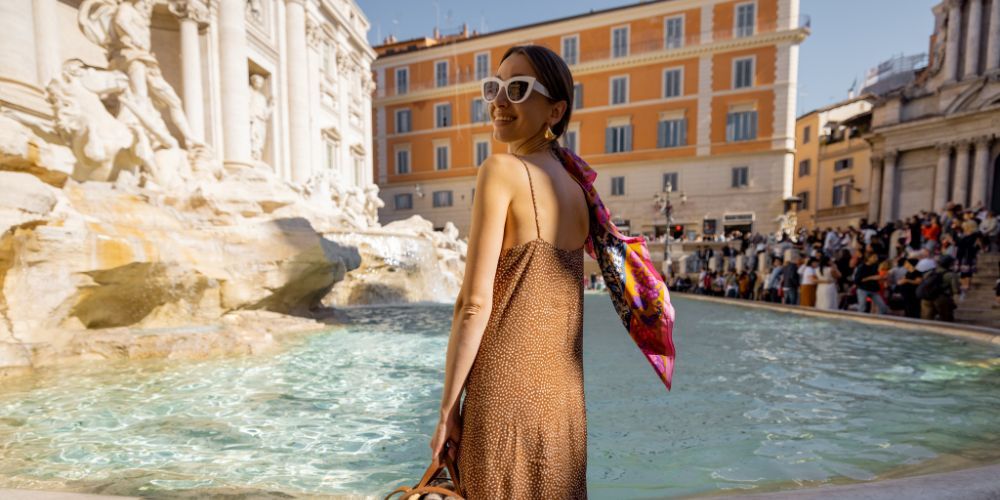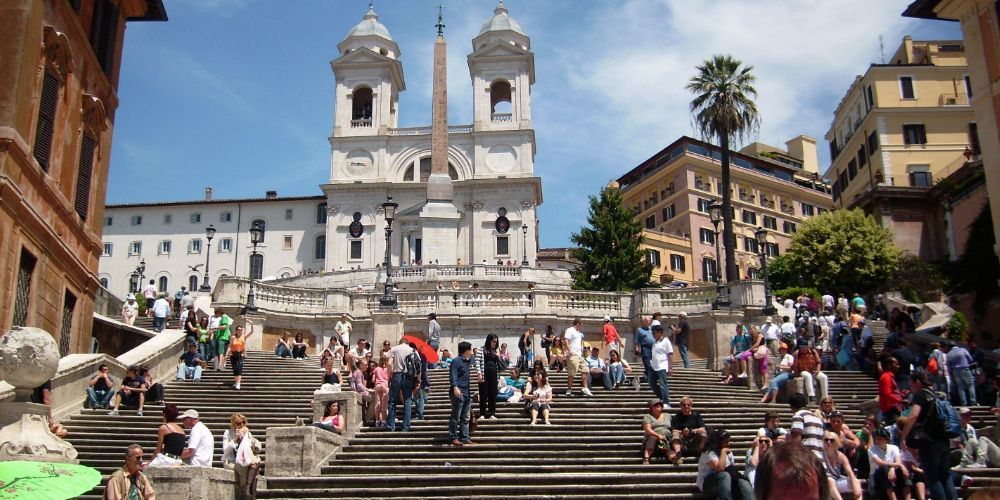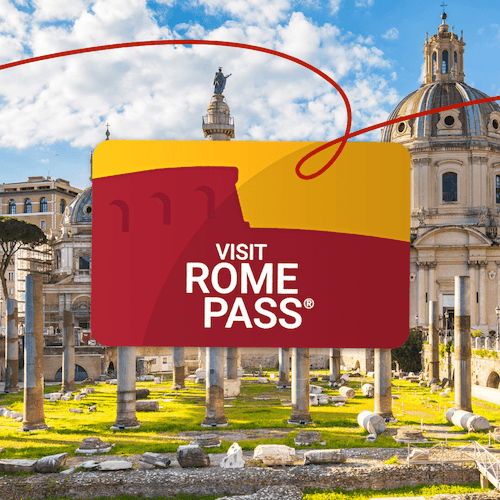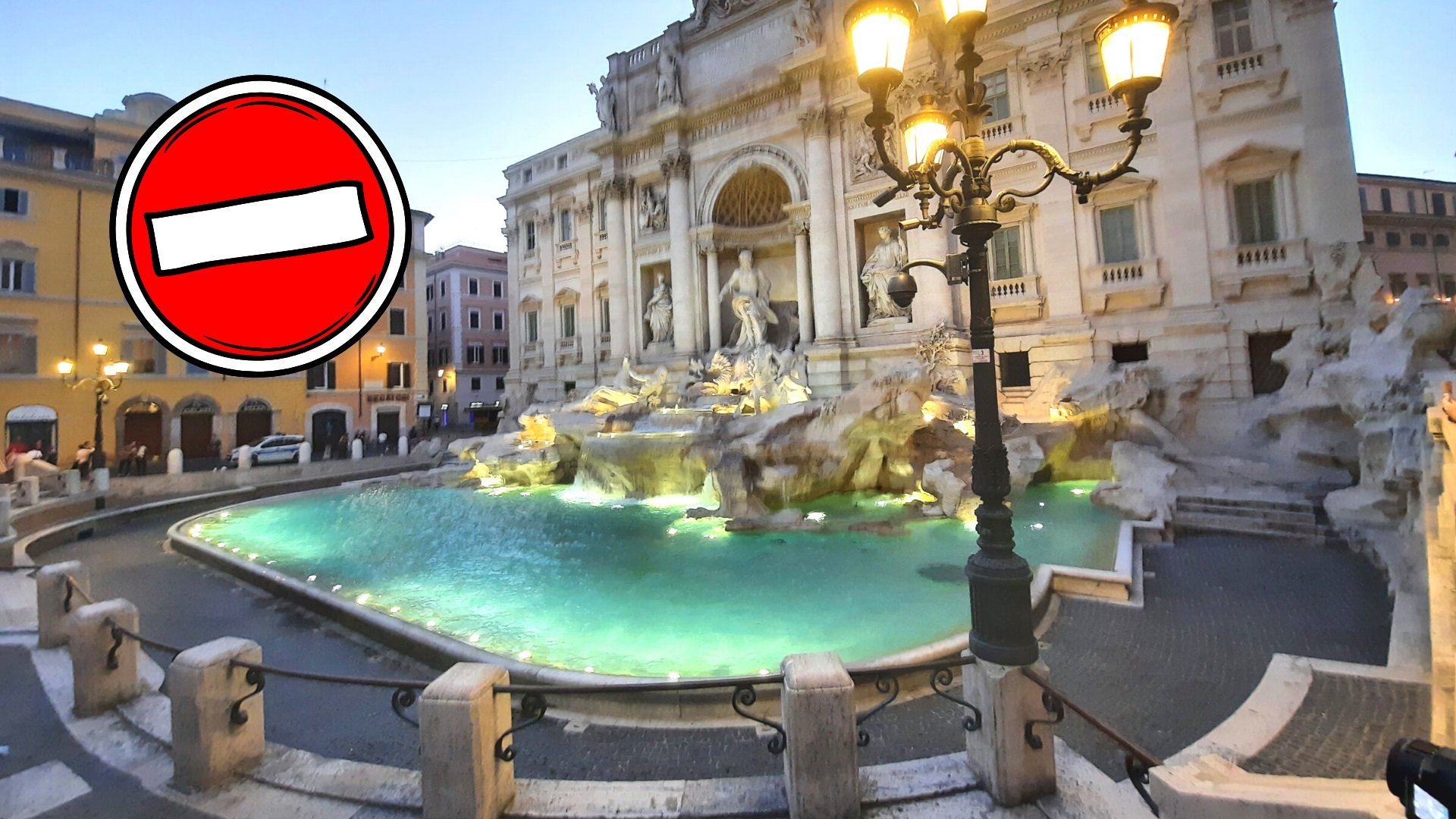Every single place in the world has its own traditions and customs which are part of a nation’s culture. However, also some unwritten rules do exist and you must absolutely know them and taking them into account, especially if it’s your first time in a city!
Indeed, Rome or the Caput Mundi is no exception so that for many people “when in Rome, do as Romans do”. So, we would like to give you some little but useful advice in order to avoid unpleasant inconvenience…

When in Rome, do as the Romans do
Practical tips for getting around Rome
.jpg)
1) Do not wear high heels. It is well-known that much of the streets in the historic center of Rome are paved with the ancient and famous cobblestones called "sampietrini" or "sanpietrini." Therefore, it is recommended to wear low and comfortable shoes, both to avoid turning a pleasant walk into torture and to spare women from getting literally stuck between the characteristic stone blocks in their daring attempt to defy this physical law!
2) Never cross the road without looking. Whether you are near a traffic light with a green signal for pedestrians or at pedestrian crossings, always pay attention to vehicles coming from both directions. Due to the literal infernal traffic that you will witness once you arrive in the Eternal City, Romans tend to be in a hurry and are not famous for being very patient when driving. This is not an excuse, on the contrary, so it is best to always be cautious.
3) Never underestimate the traffic and distances in Rome. As mentioned in point 5, moving around Rome is not an easy task. Romans have to endure hours and hours of traffic every day, and unfortunately, the same applies to visitors coming to Rome. Just think that the city, with its 1285 square kilometers, is truly immense, especially when compared to other Italian or European cities such as Milan or Paris. Rome is 7 times larger than Milan (182 sq km) and even 10 times larger than the City of Light (120 sq km). Unfortunately, due to traffic and continuous ongoing work, sudden changes in directions (Editor's note: this could be listed among the indisputable physical laws), the punctuality of surface transportation is not guaranteed. Therefore, once you have planned your itinerary, prioritize traveling by subway and walk whenever possible, avoiding road traffic. However, traveling underground won't allow you to appreciate all the corners of the city, which, like an open-air museum, reveals its majestic beauty to visitors.
4) Do not wander away from tourist routes. Unless you are with locals who know the city well or accompanied by experienced guides, avoid leaving the areas most frequented by citizens and tourists without asking for advice. Both during the day and at night, as in any other city in the world, you could risk unintentionally venturing into less recommendable areas.
5) Never use your own car in Rome. Returning to the traffic mentioned above, for those who have decided to use their own car, it must be said that even "driving Roman-style" is an experience to avoid. Impatient and easily irritable, Roman drivers and motorcyclists (and in this category, we clearly include some picturesque bus drivers as well) often take part in singular scenes worthy of the theater. Moreover, no navigator can keep up with the rapid changes that Rome undergoes from day to night and vice versa. New prohibitions, one-way streets, closed or interrupted roads are the order of the day and often devoid of any logical foundation. Not to mention parking and restricted traffic zones... Arm yourself with patience and, paraphrasing the great poet Dante Alighieri, abandon your car, all you who enter!
6) Do not limit yourself to the historic center alone. Despite the fact that the historic center hosts the vast majority of places of interest, Rome is a multifaceted and so to speak "multilayered" city that offers its peculiarities, far and wide, throughout its urban fabric. Beyond the classic, well-known, and popular itineraries, do not underestimate the possibility of visiting some more peripheral but equally worthy areas. One of the examples that we undoubtedly suggest is the historic and vibrant Garbatella neighborhood, one of the beating hearts of the capital. A short walk from Ostiense Station, it is easily reachable by Line B of the subway, which has its eponymous stop called, precisely, Garbatella. Another valid proposal could be a stroll in the elegant and distinctive Coppedè neighborhood.
7) Do not improvise the itinerary and do not wander aimlessly. In addition to being large, Rome is truly filled with places, monuments, sites, churches, palaces, buildings, etc., to see. It is best to meticulously plan an itinerary to optimize your time and to avoid missing anything along the way or getting lost along the intricate alleys and streets of the historic center... Arm yourself with a good map and, in case of doubt, ask for information: Romans, like Italians in general, even if they do not know your language, will be able, with their renowned gesturing, to guide you with the help of a few keywords and their remarkable communication skills and unparalleled relational abilities.
Gastronomic Tips to Savor the Pleasures of the City

8) Do not eat near monuments or main squares. There is a specific ordinance issued by the Municipality of Rome that expressly prohibits consuming food near sites of interest or monuments. One of the most targeted places in this regard, until a few years ago, were the steps of the Spanish Steps (Piazza di Spagna). It is not a pleasant sight to see this postcard-like view submerged in litter, cups, chewing gum, cigarette butts, or all kinds of waste. Beware, as you could risk hefty fines!
9) Never order a carbonara with improbable ingredients. The authentic carbonara, one of the typical dishes of the Roman culinary tradition, involves the use of few and simple ingredients. Of course, pasta (preferably spaghetti, mezze maniche, or rigatoni), eggs, guanciale (cured pork cheek), Pecorino Romano cheese D.O.P., black pepper, and salt for cooking water. To avoid accentuating the saltiness of pecorino and guanciale, it is recommended not to use additional salt in the seasoning. With this premise, if you don't want to make the waiters shudder, avoid asking for improbable ingredients such as cream, mushrooms, onions, garlic, parsley, and so on. The carbonara, in Rome, is sacred!
10) Never order a cappuccino after noon. The cappuccino in Rome, as well as throughout Italy, is synonymous with breakfast. Actually, it's not a matter of time but rather the pairing of cappuccino with a savory dish consumed at lunch or dinner... Although "tastes cannot be disputed," as the famous Latin saying goes "de gustibus non est disputandum," cappuccino typically accompanies a good croissant or pastry. Try it to believe it!
Useful Tips for Safety and Social Behavior:

11) Do not bathe in the fountains. Even though Rome can reach very high temperatures during the summer, we strongly advise against immersing yourself or taking foot baths in the numerous fountains you will come across during your walks or chosen itineraries. The times of Marcello Mastroianni and Anita Ekberg, who peacefully bathed in the Trevi Fountain in Fellini's movie "La Dolce Vita," are long gone... Today, you would only risk a hefty fine!
12) Do not enter places of worship in skimpy clothing, and do not walk around the city shirtless. This applies almost everywhere, but in Rome in particular, especially in the Vatican or churches, it's best not to enter with shorts or skirts that are too short, low-cut outfits that leave shoulders and cleavage exposed. Even if it's hot, we're not at the beach. So, avoid walking, specifically referring to men, shirtless on the streets of the city. Besides nasty sunburns, you risk a hefty fine!
13) Do not throw coins into any fountain you see. Many believe that throwing coins into each of the over 2,000 fountains in Rome is a tradition or a gesture of good luck. Nothing could be further from the truth. The only fountain that has this peculiarity is the Trevi Fountain, mentioned above for other reasons.
14) Do not casually photograph gladiators, legionaries, and centurions. Along Via dei Fori Imperiali, which leads from Piazza Venezia to the Colosseum, near the entrance to the Palatine and Roman Forum, at the Colosseum itself, and often at Castel Sant'Angelo, you will come across famous Roman gladiators in period costumes. Who wouldn't want a photo to immortalize memories of an unforgettable trip? Agree on the "fee" in advance to avoid unpleasant inconveniences.
15) Do not talk to a Romanista about Lazio and to a Laziale about Roma. For football enthusiasts on an international level, the age-old rivalry between the two teams of the capital is nothing new. For fans of both sides, their own team is off-limits. Even though they call each other "cousins," there is nothing familiar or affectionate between them. Those who have had or will have the opportunity to attend the Derby della Capitale know well what we mean: taunts sometimes not exactly kind and civil, but at times unique and imaginative. "La Roma nun se discute: se ama" is the slogan of a deeply rooted attachment to the colors of yellow and red. After all, symbols also express a strong connection to the origins of the Urbs: the Capitoline Wolf for Roma and the Imperial Eagle for Lazio. Football in Rome is not just a sport but a philosophy for many Romans, so be careful not to pick the wrong side... because whether it's Roma or Lazio, your own team is sacred!
Discover Rome with the best tourist pass in the city.
.jpg)
The Visit Rome Pass is an ideal option for travelers eager to explore all the wonders of Rome without worrying about entrance fees. This tourist pass offers priority access to numerous iconic attractions of the city (over 50!), such as the Colosseum, the Roman Forum, and the Sistine Chapel. Thanks to the pass, you can skip the lines and save precious time to fully enjoy your visits.
Moreover, the Visit Rome Pass provides unlimited access to Rome's public transportation, including the metro, buses, and trams, making it easy to move between different attractions. With the ability to choose from various validity options, travelers can tailor the pass to their needs and plan an unforgettable experience in Rome without complications. With the Visit Rome Pass, enjoy an unparalleled experience in the Eternal City, discovering its history, art, and culture with utmost comfort and convenience.
Buy your Visit Rome PassAbout the author
Written on 22/06/2021




Alessandra Festa
A trip to the Caput Mundi doesn't only deal with historical, artistic, scenic, and gastronomic itineraries. Visiting Rome means getting to know Roman people, their habits, and their way of being: the authentic culture of a people.